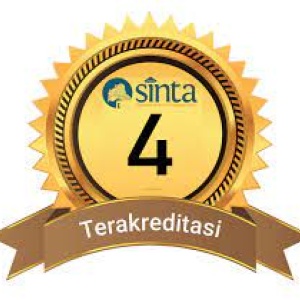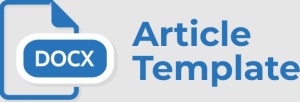Aksara Cacarakan pada Arsip Akta Jual Beli Tanah Milik Bupati Sumedang Pangeran Aria Soeria Atmadja
DOI:
https://doi.org/10.37014/jumantara.v14i2.2882Keywords:
Archives, Manuscripts, Cacarakan sript, Pangeran Aria Soeria Atmadja, Land Purchase and Sale ActAbstract
This article discusses the archives of the land purchase and sale act belonging to Bupati Sumedang Pangeran Aria Soeria Atmadja. The land purchase and sale act was written on May 3, 1915, in Conggeang, Sumedang. The archive is part of the collection of the Library of the Yayasan Nadzir Wakaf Pangeran Sumedang. It was written using the Cacarakan script in the Sundanese language. The writing style of the Cacarakan script contained in the archives is unique, with some characters having two different writing models. In addition, there are peculiarities and uniqueness in the archives that can only be found in the land purchase and sale act archive. To identify the characters and uncover the uniqueness contained in the archive, this research will apply the method of philological research with a manuscript study (codicology) approach. By using the codicology method, the consistency of writing the Cacarakan script, uniqueness, and peculiarities contained in the 1915 land purchase and sale act belonging to Bupati Sumedang Pangeran Aria Soeria Atmadja can be revealed.References
Buku
Baried, Siti Baroroh dkk. Pengantar Teori Filologi. Jakarta: Pusat Pembinaan dan Pengembangan Bahasa, Departemen Pendidikan dan Kebudayaan. 1985.
Borst, L., Lezer, L.A. De Soendaneesche Taalcursus. Bandung: Weltevreden. 1919.
Churchill, W. A. Watermarks in Paper in Holland, England, France, etc. In The XVII and XVIII Centuries and Their Interconnection. Netherlands: Krips Reprint Company.
Coolsma. S. 1985. Tata Bahasa Sunda. Jakarta: Djambatan. 1965.
Darusuprapta, dkk. Pedoman Penulisan Aksara Jawa. Yogyakarta: Yayasan Pustaka Nusatama. 2002.
Grashius. Soendanesche Spraakkutnst. Leiden: A. W. Sijthoff. 1882.
Lubis, N. H. Kehidupan Kaum Ménak Priangan 1800-1942. Bandung: Pusat Informasi Kebudayaan Sunda. 1998.
Rosyadi, dkk. Pelestarian dan Usaha Pengembangan Aksara Daerah Sunda. Jakarta: CV. Eka Dharma. 1997.
Jurnal dan Makalah
Francois Déroche. “La transmission écrite du Coran les débuts de I’Islam: le codex Parisino-petropolitanus.” Leiden: Brill. (2009).
Francois Déroche. “The Manuscript and Archeological Tradition: Physical Evidence” in Mustafa Shah and Mohammad Abdel Haleem (eds.).” The Oxford Handbook of Qur’anic Studies. (2020).
Handayani, Rahmi, dkk. “Rekam Jejak Pangeran Aria Soeria Atmadja (Bupati Sumedang Tahun 1883-1919).” Jurnal. Volume. 8. Nomor.1 (2019).
Hijjas, Mulaika. “Entries 25 and 42 in A Jawi Sourcebook for the Study of Malay Palaeography and Orthography.” Indonesia and the Malay World. Volume 43. Nomor 125 (2015).
Nurhata. “Naskah Surat Akta Jual Beli Tanah Sawah: Kepemilikan Tanah Pada Awal Abad Ke-20.” Jurnal. Patanjala Volume. 11 (2019).
Permadi, Tedi. “Struktur dan Komponen Tiga Surat Segel Tanah di Priangan.” Jumantara: Jurnal Manuskrip Nusantara. Volume. 09 (2018).
Ruhaliah. “Jejak Penjajahan Pada Naskah Sunda: Studi Kasus Pada Surat Tanah.” Jumantara: Jurnal Manuskrip Nusantara. Volume. 01 (2010).
Z, Mumuh Muhsin. Pangeran Aria Suria Atmadja (11 Januari 1851 - 1 Juni 1921). Makalah Penelitian Fakultas Ilmu Budaya Universitas Padjadjaran, Bandung. (2013).
Rujukan Elektronik
Nurwansah, Ilham. “Aksara Cacarakan.” Diakses pada 05 Januari 2022. Hari: Rabu. Pukul: 16.34 WIB. https://www.kairaga.com/naskah-sunda/aksara/cacarakan/.
Sumber Tidak Diterbitkan
Nurwansah, Ilham. (2020). Segmentasi Tingkat Kata pada Naskah Tedja Buana Alibasa. Makalah pada Sidang Sengketa Tanah Adat Sunda Wiwitan.
Peraturan Perundang-Undangan
Undang-Undang Republik Indonesia Nomor 43 Tahun 2007 tentang Perpustakaan.
Downloads
Published
Issue
Section
License
Copyright (c) 2023 Jumantara: Jurnal Manuskrip Nusantara

This work is licensed under a Creative Commons Attribution-ShareAlike 4.0 International License.
- This statement is the author's commitment to respect copyright, both in terms of citing other people's work and utilizing journal content. If necessary, the author can send an Authenticity Statement of Article stating that "this work is the author's original idea and has never been sent to another publisher and published in any publication"
- The author retains copyright.
- The moral rights of publication belong to the author.
- Formal legal aspects in the use of journal publications refer to the Creative Commons Attribution-ShareAlike 4.0 (CC BY-SA) license, which means that journal content can be used freely for any purpose.









